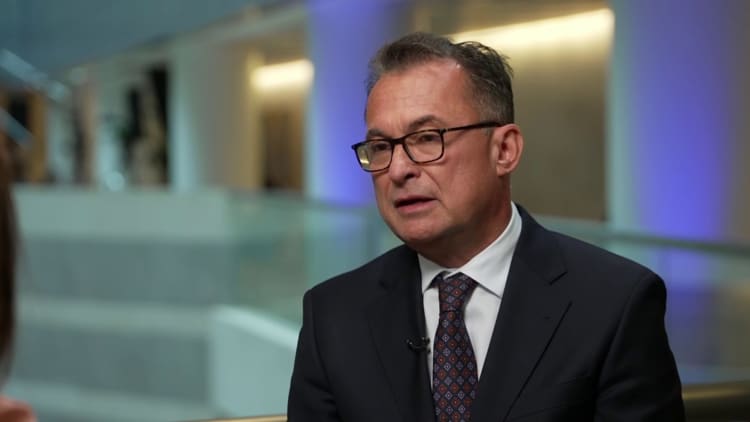The European Central Bank should cut interest rates in June to avoid falling behind the inflation curve, according to ECB policymaker François Villeroy de Galhau.
“The question is the next Governing Council which will be early June … and here barring a major surprise we should cut rates because we are now confident enough and increasingly confident about the disinflationary path in the euro area,” Bank of France Governor Villeroy told CNBC’s Karen Tso on Thursday.
Asked whether the bank missed an opportunity to moderate policy at its April meeting, Villeroy replied, “April belongs to the past. We had an intense discussion, an open one about the economic situation.”
“There is now a very large consensus that it is time to take this insurance more or less against what I would call the second risk. The first risk is to act too early and to let inflation go upwards again and this would be a danger,” he continued. “But the second risk would be to be behind the curve and to pay a too high cost in terms of economic activity and employment.”
Speaking on the sidelines of the International Monetary Fund Spring Meetings, Villeroy said it was time to cut rates to avoid falling behind the inflation curve.
His comments come shortly after the central bank recently gave its clearest indication yet that it could cut interest rates in June.
The ECB held interest rates steady at a record high for the fifth consecutive meeting last week but signaled that cooling inflation means it could begin trimming soon.
In a shift from previous language, the ECB said “it would be appropriate” to lower its 4% deposit rate if underlying price pressures and the impact of previous rate hikes were to boost confidence that inflation is falling back toward its 2% target “in a sustained manner.”

A flurry of the central bank’s Governing Council members have since remarked about the near-term prospect of loosening monetary policy, with ECB President Christine Lagarde indicating that the central bank is on course to moderate rates “in reasonably short order” barring any major shocks.
“We are observing a disinflationary process that is moving according to our expectations,” Lagarde told CNBC’s Sara Eisen on Tuesday.
“We just need to build a bit more confidence in this disinflationary process but if it moves according to our expectations, if we don’t have a major shock in development, we are heading towards a moment where we have to moderate the restrictive monetary policy,” Lagarde said.
Geopolitical risks
For some members of the central bank’s main decision-making body, the biggest threat to a June rate cut is flaring geopolitical tensions.
ECB policymaker Robert Holzmann on Wednesday singled out the ramifications for energy prices amid Iran-Israel tensions as the single most important factor in terms of Europe’s fight to tame inflation. He added that an abrupt rise in oil prices, for example, would constitute a “major, major shock.”
Holzmann’s comments echoed the view of ECB policymaker Olli Rehn, who on Tuesday said the likelihood of a June rate cut hinged upon inflation falling as expected, noting that the biggest risks to monetary policy stem from Iran-Israel tensions and the Russia-Ukraine war.

Separately, ECB policymaker Joachim Nagel told CNBC Wednesday that a June rate cut appeared increasingly likely but cautioned that certain parts of the incoming inflation data still looked higher than desired.
“Talking about the June meeting, I think the probability is increasing that we will see a rate cut in June but there are still some caveats,” Nagel, the chief of Germany’s Bundesbank, said on Wednesday.
″Core inflation is still high, service inflation is high. For the June meeting we will get our projections, so we will get our new forecasts and if there is a confirmation that inflation is really going down and we will achieve our target in 2025, as I said, the probability is becoming higher that this rate cut is here for the June meeting,” Nagel said.
— CNBC’s Matt Clinch and Sophie Kiderlin contributed to this report.














